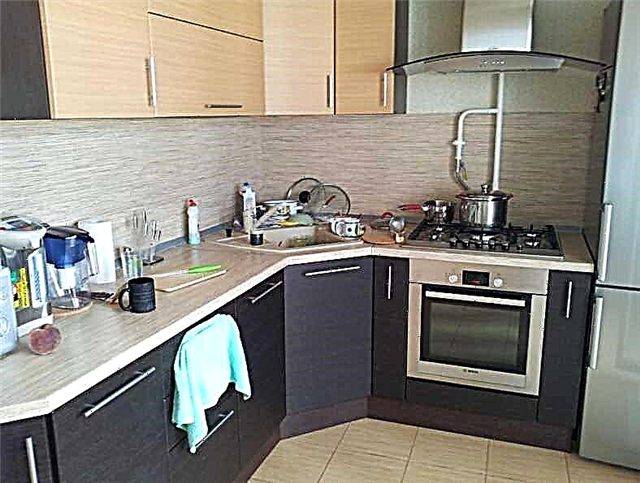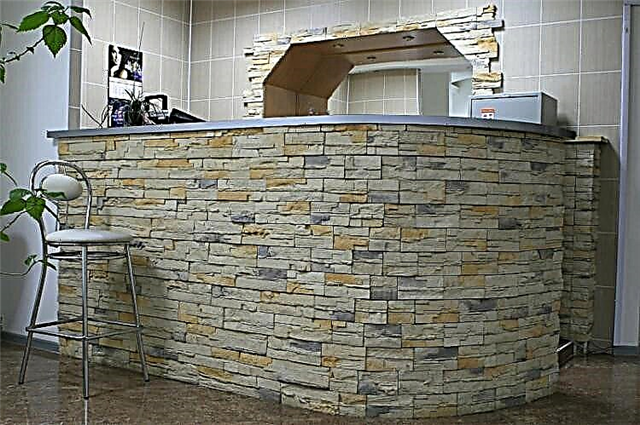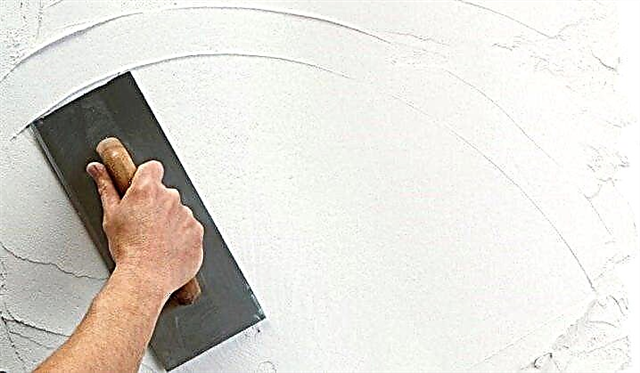An indispensable appliance in the modern kitchen - the refrigerator - is very finicky to the ambient temperature and the neighboring equipment. So, installing it next to stoves, ovens, and radiators is not recommended, although it is possible to minimize the risks of their proximity.
What to expect to put a refrigerator next to or directly in front of a gas pipe? The benefit is obvious - it will turn out to close the ugly pipeline, but such an arrangement will bring a lot of problems.
Can I put a refrigerator next to the gas pipe
The gas system from the neighborhood with a refrigerator, especially modern, is not at risk. Although this layout is undesirable, it is extremely difficult for owners of small rooms to consider another solution.

The following risk factors lead to questions about the safe operation of cooling equipment near the gas pipeline:
- a bare wire or a short circuit in the wiring of the equipment (component malfunction) can increase the voltage on the gas pipe and provoke an explosion,
- insufficient air supply for the refrigerator to work, will lead to overheating of the compressor, the walls of the device, and then the gas pipe when it is close to it,
- a similar hazard is caused by the heating surface of the condenser coil or protruding radiator.
In fact, the risks presented are nullified. According to studies by manufacturers of household appliances, the temperature on the back of the refrigerator will not exceed 60 degrees, and in practice, taking into account the loss of thermal energy - 50 degrees.
Even with a snug fit and a constantly elevated temperature to this level, only the pipe coating will be damaged. The paint in the places of welding will burn and peel off. The same will happen when the pipeline interacts with the current.
A number of justifications reinforce the groundlessness of the explosion threat from an accidentally flashing current spark:
- In the event of a short circuit, the machine installed on the meter cuts off electricity.
- If the machine does not work, the phase will be grounded, as the metal pipes of the gas pipeline go into the ground.
- If a spark gets on the rubber feed hose, the current goes to the neutral wire (ground bus).

Important: All connections in the pipe and submarine cables must be insulated and sealed.
It is possible that a person will be shocked directly from a faulty refrigerator. Otherwise, the presence of a compressor power cable under a voltage of 220 V in the gas pipeline zone does not cause any threats.
What should be the distance from the gas pipe to the refrigerator
While the location of the gas stove as far as possible from the refrigerator is understandable, at least in terms of ease of use of the first, there are no unambiguous requirements for the placement of the gas pipe in Russian law. An exception is part 7 of the Rules for the Installation of Electrical Installations (PUE), where clause 7.1.50 indicates the minimum distance from the gas pipeline to switches, sockets and electrical components of 0.5 meters.
However, in a small kitchen to fulfill this condition is almost impossible. The gas service controllers checking the meter readings generally require free access to it and to the valve. If necessary, shut off the gas supply should not cause any difficulties and delays. Otherwise, a minimum gap of 2-3 cm between the refrigerator and the gas pipe is enough - such a installation will not affect the gas pipeline system. But such a neighborhood is limited by the nuances of the refrigerator.
Refrigerator operation principle and risk factors
The refrigerator operates by taking heat from the refrigerator compartment through a cold liquid refrigerant (freon) passing through it, which evaporates during the collection of thermal energy. Then, following the condenser system of the refrigerator in the form of a thin serpentine tube on the rear wall, gaseous freon is cooled, giving off heat to the environment.
The refrigerant enters the compressor in the form of condensate, after which it is compressed (while its temperature drops below zero) and is supplied to the refrigerator in a liquid state.
The compressor itself runs on AC power and is an electric motor, on the shaft of which there is a special type of nozzle, which compresses the freon condensate entering the working chamber.
Thus, when the refrigerator is operating, there are two factors that pose some risk: the warm surface of the condenser coil on the back wall and the electrical power to the compressor.

Fig. 1 Refrigerator in the kitchen - location examples
Possible problems and their prevention
The question of whether it is possible to put a refrigerator in the kitchen next to a gas pipe, also implies the location of the electrical equipment of the stove or oven. Work near heated surfaces affects the performance of the refrigerator. The device reacts sharply to ambient temperature conditions.

Before furnishing the kitchen, it is necessary to take into account the class of the refrigerator, which indicates the maximum temperature suitable for its operation. Improper planning will lead to much more tangible and undesirable consequences than slow cooling of the refrigerator compartment.
Motor or rotor failure
The optimum temperature inside the refrigerator does not fall due to an increase in temperature from the outside. However, when the surface of the unit heats up, the motor is forced to work in heavy duty to maintain this temperature. The rotor rotates almost continuously, although at first glance it seems different. Even after quick cooking, the sides of the stove or oven cool for a long time.
The increased load significantly reduces the life of the compressor. And after 3-5 years, the refrigerator will have to be changed. In addition, if the refrigerator is high, the temperature difference will be compensated for by the part that does not require cooling. Due to the instability of the internal microclimate, products will begin to deteriorate.
To prevent problems, it is recommended to install a narrow (15-20 cm) small bottle holder between household appliances. At the same time, it will make minor adjustments to the layout of the kitchen. A built-in cabinet with the provided exits for the gas pipe can also act as a protective barrier.

How to fix the jambs in the installation?
Good afternoon, they put a window in the fall, in winter it began to freeze under it, there is no window sill yet, because the apartment is renovated, the installers at the bottom put the left part of the window directly on the brick without foam, the other part is 1cm foam. There are only two options in the head: 1) dismantling and installation (I would not really like to, because the ceiling, slopes are already plastered), 2) cut.
Overpayment for electricity
A motor forced to work more intensively consumes many times more electricity. In addition, electricity is also taken for a “jerk” before forced cooling of the freezer. As a result, increased bills and overpayment, which could have been avoided by protecting the refrigerator from heating equipment.
Fridge enamel deteriorates
The enameled sidewall of the refrigerator will crack over time due to high temperatures. Even earlier covered with drops of fat. Watching they are not very aesthetically pleasing, but are removed with difficulty. From rough friction with metal sponges on the enamel, scratches will remain.
In such a neighborhood, it is recommended to install a heat-insulating partition. You will also have to remember to wipe the refrigerator after each cooking. For the first time, you can glue the side with improvised paper or foil.
Alternative protection methods
Still, you can fit the refrigerator into the interior of the kitchen, taking into account its size, without reducing the effectiveness of its work. Protective shields and partitions will ensure safe insulation of the refrigerator from both the gas pipeline and the accompanying household appliances - stove, oven.

The refrigerator can be put in a home-made or ordered built-in cabinet made of chipboard, reed or polystyrene, protected with a trimmed cork sheet. It is important in this case to provide enough space around for ventilation. Materials are resistant to moisture, but can be deformed from prolonged heating.
A more universal solution is a thin heat insulator made of inorganic materials. For example, drywall, fiberglass. This affordable raw material can withstand not only temperature changes, but also moisture resistant and additionally provides electrical insulation. Easy to attach to double sided tape.



